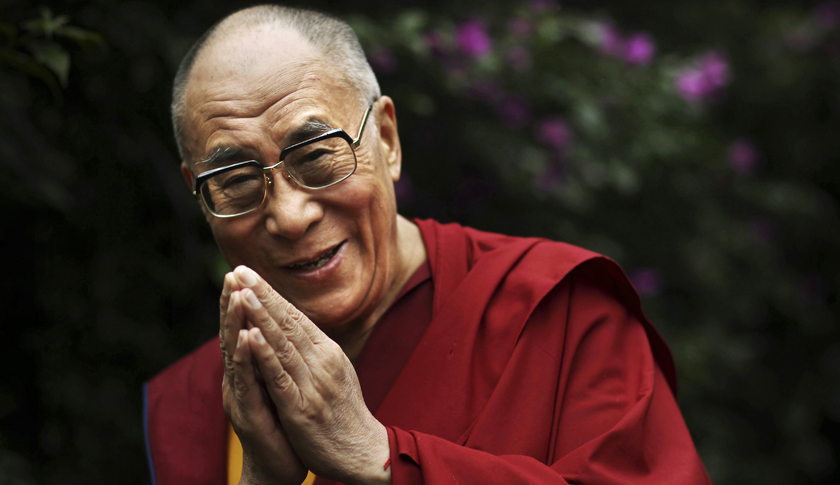By Zhargal Aiakova
The following article is by Buryatia-based writer Zhargal Aiakova, who has recently published a book titled Buddhism in the West: Meditation, Mind and Life, which charts the development of Buddhism in the West, which is a relatively new subject among Russian readers of Buddhist research and literature.

For more than half a century, Buddhism has been a significant phenomenon in Western society which allows one to speak of a previously non-Western worldview, cultural complex, lifestyle and social behavior that is now developing within the framework of Western culture.
Western Buddhists are represented by both large Asian diasporas and newly converted followers, for whom Buddhism is primarily a philosophical doctrine and psychology. Therefore, the Western practice of Buddhism claims to be more “intellectual” and “rational” in comparison with the traditional Asian Buddhism, which emphasizes the religious aspects.
Over the past few decades, Western scholars, together with Buddhist monks and meditation masters, have been conducting research in the field of Buddhist psychology. A striking example of such cooperation is the Institute of Mind and Life, which was founded for the purpose to study the nature of consciousness using modern advances in science and meditation methods developed in Buddhism for thousands of years. The goal of Buddhist scholars is to reduce suffering in the world and modern science is a tool that can bring this goal closer.
His Holiness the Dalai Lama has explained that kindness and harmony in the world are not only beautiful words and moral imperatives they are the vital foundations of our existence. The path to this realization lies through the hygiene of the mind in which all our thoughts and actions are rooted.
The results of the collaboration demonstrate synthesis of classical texts interpreted by scientists through the prism of deep knowledge of Buddhist teachings and modern Western approaches to describing the aspects of the mind and their ability to be mindful. Buddhist meditation in the form of mindfulness has become extremely popular in the West and the introduction of mindfulness training programs in various areas (medicine, education, social activity etc.) of Western society is one of the most impressive examples of how meditation is being promoted to the masses.
At the beginning of the 21st century, Western intellectuals began to take an interest in Buddhism and undertook source research because of the Sanskrit and Pali manuscripts that were available at the time. European scholars living in British colonies in Asia began to produce English translations of Asian sacred texts, including Buddhist sutras. Some of the American intellectuals E.P. Blavatsky (Helena Blavatsky) and G.S. Alcott (Henry Steel Olcott) became acquainted with Buddhism during their travels to India where they studied Buddhist culture and ancient texts. Their attempts to study Buddhism remained at the level of “elite Buddhism” and were not available widely but it led to the entry of Buddhism into American society and the process of its “Americanization” or popularization.

Today, we can talk about two “Buddhisms” or the established categories of followers of Buddhist teachings: the so-called “imported” or ethnic Buddhism of Asian immigrants and “newly converted” Buddhism or Buddhism of converts mainly among the middle class and the group of intellectuals and public personas. The problem of the categorization of Western Buddhists is now a well-studied subject.
The spread of Buddhism in Western countries occurred in the 20th century and is primarily associated with the massive emigration of Chinese, Japanese, Koreans and Vietnamese to the United States, Australia, Europe, and Latin America. Since 1950 among Western intellectuals, Zen has been the representative tradition (due to figures like D.T. Suzuki) that inspired scientists and thinkers and had a noticeable influence on the work of famous writers, poets, artists, musicians. In Western countries, joss houses and temples began to appear among Chinese and Korean Buddhists, churches among Japanese Buddhists, and converts founded Dharma meditation centers. With the arrival of Buddhist teachers in the West Buddhism entered academies, universities, and research centers.
Around them, communities of adepts from among educated youth were formed, who not only studied and studied Buddhist languages, but also helped teachers translate Buddhist texts into English and adapt the teachings to Western culture. Quite often Western scholars – Buddhists themselves became practicing Buddhists and vice versa. In the United States, Zen Buddhism was at that time the leading Buddhist until the arrival of Buddhism in the Tibetan tradition in the 1970s. The first teachers of Buddhism in the Tibetan tradition were Geshe Wangyal and Chogyam Trungpa . They established Buddhist monasteries and taught many students of Western background and contributed greatly to the spread of Buddhism in a Tibetan tradition in the United States. In 1979, the first visit of His Holiness the XIV Dalai Lama to the United States took place which became the most important event for a new wave of Western public interest in the spiritual leader of Buddhists and Buddhism in general.
The desire for individual and social welfare based on the implementation of the doctrine of Buddhist teachings and an orientation towards solving global problems of mankind caused the activation of Buddhist social movements in the West, which developed mainly in the form of Secular Buddhism (S. Batchelor) and Social Engaged Buddhism (Thích Nhất Hạnh). These influential movements, which originated mainly among lay Buddhists, arose in response to the contradictory nature of Buddhist modernism, which incorporated elements that were far from traditional Buddhism, but used the Buddhist “brand.” The main areas of social engagement of modern Buddhist movements have become issues of peace and the environment, intercultural and interfaith dialogue, ethical education, poverty and equality of opportunity.
One of the striking features of the spread and adaptation of Buddhism in the West is the feminization of Western Buddhist monasticism. Buddhist feminism is marked by the desire of women to obtain equal access to Buddhist education, full ordination in a Tibetan tradition and the possibility of public recognition of their merits for the benefit of society. The activities of Western nuns are mainly aimed at solving the problems of the lost tradition of full ordination for bhikkhunis in the Tibetan context and overcoming patriarchy in the Buddhist hierarchical system. Research is related to the Tibetan Mahayana in the mid 50s-60s, when the first high lamas began to come to the West. Young American women from wealthy families, engaged in serious spiritual pursuits has become acquainted with Buddhism and turned to teachers for help and guidance. Educated in Buddhist monasteries in India and ordained by high teachers, they are today the leaders of the women’s monastic movement in the Western Buddhist world. An impressive example of a Western women’s Buddhist movement is the Sakyadhita Buddhist Women’s International Association many years organized by the bhikkhuni and professor Ven. Karma Lekshe Tsomo.
His Holiness Dalai Lama doesn’t promote religious aspects of Buddhism, noting that this is the business of Buddhist believers. Rather, he promotes universal values. The Nalanda tradition of Buddhism did not oppose scientific, rational knowledge, but included them in its picture of the world and provided for the study of sciences in its system of traditional spiritual education. Buddhist leaders today are open for dialogue with modern Western science and leaders of other spiritual traditions, as they offer a universal moral basis for mutual understanding and cooperation.


